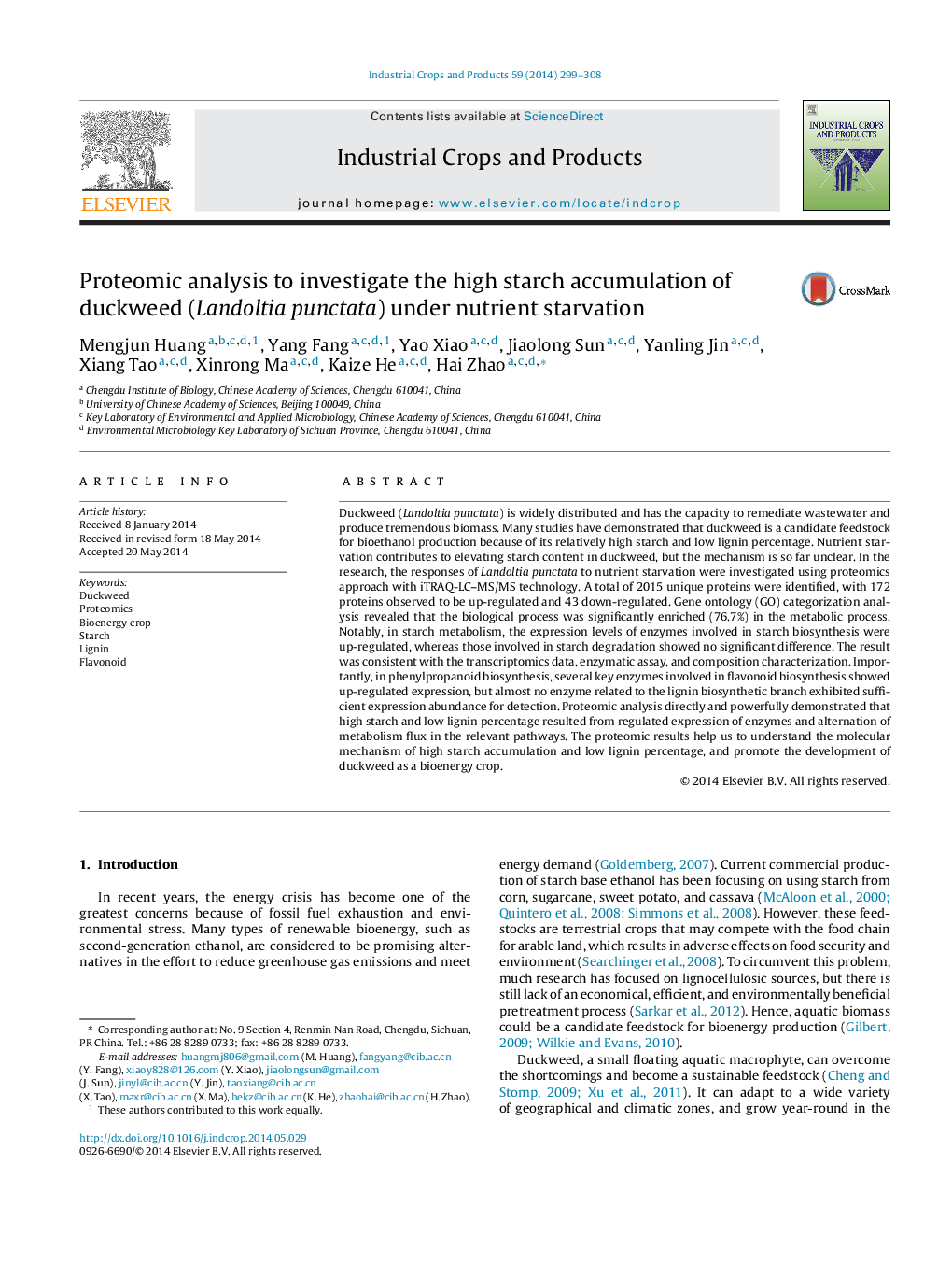| Article ID | Journal | Published Year | Pages | File Type |
|---|---|---|---|---|
| 6376663 | Industrial Crops and Products | 2014 | 10 Pages |
Abstract
Duckweed (Landoltia punctata) is widely distributed and has the capacity to remediate wastewater and produce tremendous biomass. Many studies have demonstrated that duckweed is a candidate feedstock for bioethanol production because of its relatively high starch and low lignin percentage. Nutrient starvation contributes to elevating starch content in duckweed, but the mechanism is so far unclear. In the research, the responses of Landoltia punctata to nutrient starvation were investigated using proteomics approach with iTRAQ-LC-MS/MS technology. A total of 2015 unique proteins were identified, with 172 proteins observed to be up-regulated and 43 down-regulated. Gene ontology (GO) categorization analysis revealed that the biological process was significantly enriched (76.7%) in the metabolic process. Notably, in starch metabolism, the expression levels of enzymes involved in starch biosynthesis were up-regulated, whereas those involved in starch degradation showed no significant difference. The result was consistent with the transcriptomics data, enzymatic assay, and composition characterization. Importantly, in phenylpropanoid biosynthesis, several key enzymes involved in flavonoid biosynthesis showed up-regulated expression, but almost no enzyme related to the lignin biosynthetic branch exhibited sufficient expression abundance for detection. Proteomic analysis directly and powerfully demonstrated that high starch and low lignin percentage resulted from regulated expression of enzymes and alternation of metabolism flux in the relevant pathways. The proteomic results help us to understand the molecular mechanism of high starch accumulation and low lignin percentage, and promote the development of duckweed as a bioenergy crop.
Related Topics
Life Sciences
Agricultural and Biological Sciences
Agronomy and Crop Science
Authors
Mengjun Huang, Yang Fang, Yao Xiao, Jiaolong Sun, Yanling Jin, Xiang Tao, Xinrong Ma, Kaize He, Hai Zhao,
